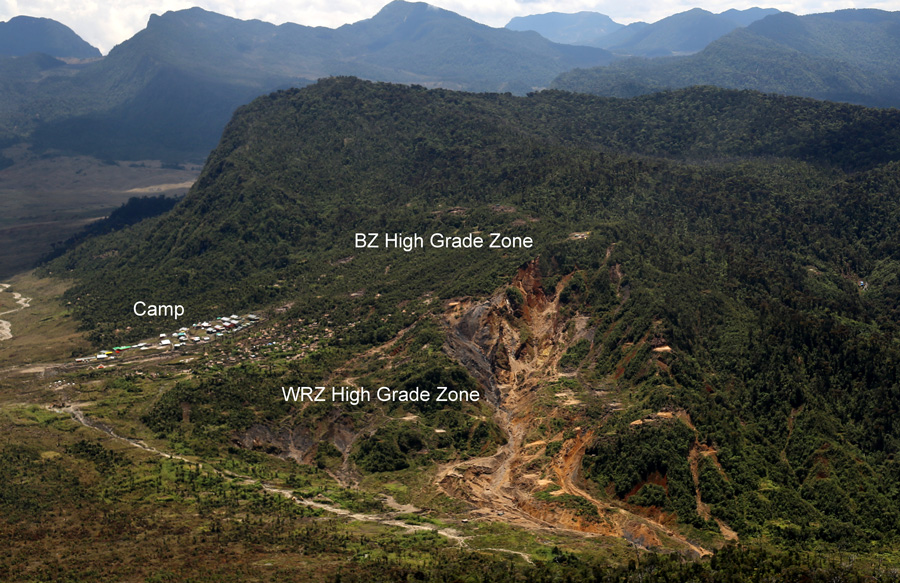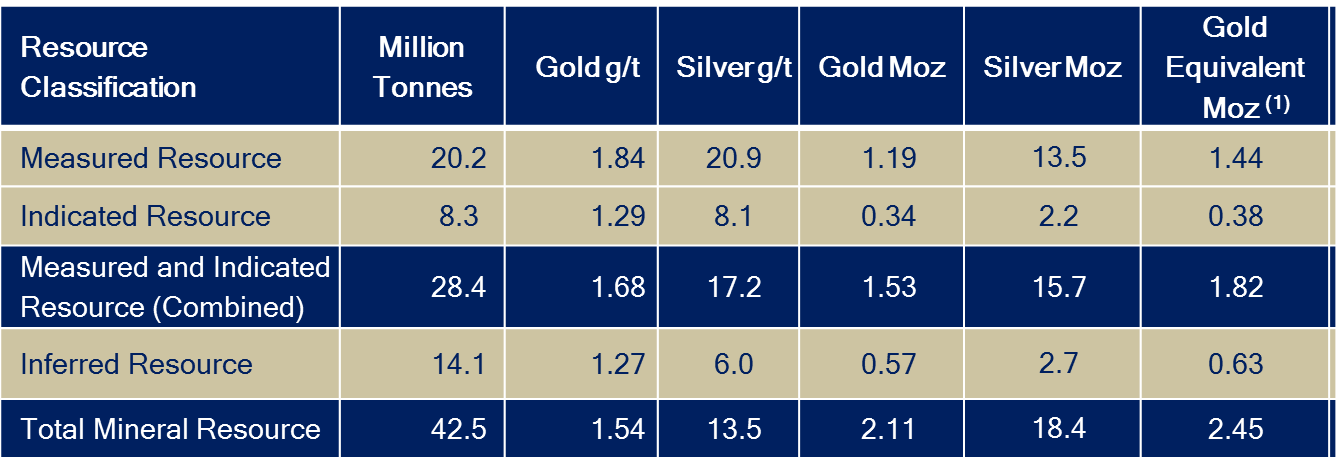Mt Kare Overview
Indochine Mining acquired the Mt Kare project in Papua New Guinea (PNG) in 2011 and following a full data review converted the existing Canadian N143-101 compliant resource to a JORC compliant resource. Due to the conversion between reporting jurisdictions a large portion of the resource was classified as inferred at this point, although the deposit contained 339 drill holes.
2012 Drill Programme
Assay results from the 2012 Drill Programme continued to confirm the project's potential. Indochine’s 2012 diamond drill programme was completed in August 2012, with 58 diamond drill holes for a total of 7791 metres. The drill programme was focused on ensuring a robust resource and geological model and to compare grade variability and density measurements with pre-Indochine drilling, as well as provide core for metallurgical work.
A major increase in the quality of the resource was announced in July, 2013 with two substantial high grade zones averaging 5-20 g/t gold, with intersections over 100 g/t gold.
Gold/Silver Resource - Papua New Guinea
Papua New Guinea (PNG), has the world's greatest concentration of world-class gold and copper deposits. In Indochine's 100% owned Mt Kare project the gold resource, has had prior expenditure of approximately A$60 million, including 365 drill holes. This led to an initial JORC-compliant Mineral Resource Statement for the Mt Kare Gold Project, released in December 2011, with 2.1 million ounces gold equivalent or 1.8 million ounces gold. The deposit lies 15 kilometres southwest of Barrick's 28 million ounce Porgera gold mine, which produces over 500,000 ounces of gold per year.
Geologically the Mt Kare deposit shares many similarities with the nearby Porgera gold mine, with the same host rocks, similar geological structures, mineralisation types and the same age of mineralisation. This indicates the large potential for growth in the current Mt Kare resource. Porgera is one of the world's top 10 gold mines, with over 500,000 oz/yr production for over two decades, and has developed significant infrastructure, including roads and power lines, nearby to Mt Kare. Porgera started as a high grade underground mine and later developed a major open cut operation, now more than 500 metres deep.
Mt Kare Fly Through
The Mt Kare projects' total Mineral Resource is 43 Mt at 1.5 g/t Au for 2.1 Moz Au, 18 Moz Ag or a 2.5 million ounce gold equivalent, with nearly 75% in the higher confidence Measured and Indicated category, based on 454 diamond drill holes (73,639 m), as at July, 2013.
The company's 2012 Pre-Feasibility Study set out options for development, which will be optimised for underground mining of the high grade zones utilising the recently updated resource model and new integrated geological model.

Mt Kare Project showing high grade zones
Resource
Table: Mineral Resource Statement, Mt Kare Gold/Silver Project, 2013

Notes
- Gold equivalent grades (AuEq) are calculated based on a gold price of US$1200/0Z and a silver price of US$22/oz, or 54.55 silver ounces per 1 gold ounce; this does not consider metallurgy recovery factors.
- Cut-off grades and capping: A lower cut-off of 0.5 g/t Au was used based on the data distribution. Capping strategy utilised: in low grade domains, analyses capped at 30 g/t Au, 250 g/t Ag; Upper Zone and high grade domains of 50 g/t Au, 500 g/t Ag.Material classified as Measured and Indicated Resources and wire framed gold mineralisation based on the 2013 block model considering an average distance between drill of 25 m and 50 m among other criteria. It is considered that this category material has a high probability of being economically extracted, including comparisons with a previously modelled PFS open pit shell based on various assumptions including the prior 2011 resource. Mineralisation beyond an average distance between drilling of 80 m was not included with the lowest category of inferred Resource.
- Rounded estimates are used, which may cause apparent discrepancies in totals. Significant figures do not imply precision.
- The resources have been reported in compliance with the JORC (2004) code.

